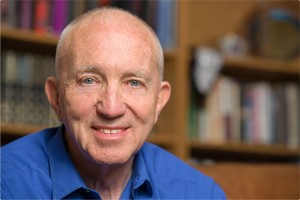
Eclipses come in two varieties. The first kind occurs because our moon is the solar system’s odd duck.
For example, it travels a special orbit. Like ballroom choreography that looks simple until close inspection, the Moon only appears to orbit the Earth. In fact, it orbits the Sun. The Earth, 80 times heaver than the Moon, moves steadily on its course about the Sun. But the Moon weaves rhythmically either side of the Earth’s orbit, first outside farther from the Sun, then in front of the Earth, then inside closer to the Sun, and then trailing the Earth. The two dancers interlock gravity arms and sway in 29-day rhythm.




